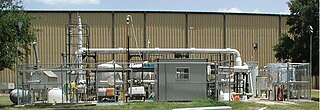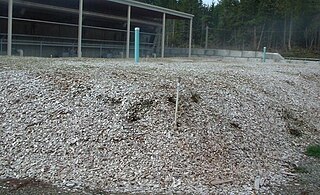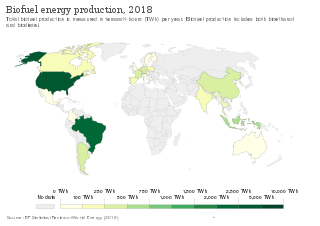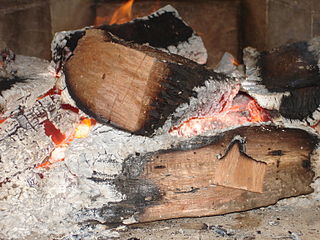 W
WThe Aarhus Protocol on Persistent Organic Pollutants, a 1998 protocol on persistent organic pollutants (POPs), is an addition to the 1979 Geneva Convention on Long-Range Transboundary Air Pollution (LRTAP). The Protocol seeks "to control, reduce or eliminate discharge, emissions and losses of persistent organic pollutants" in Europe, some former Soviet Union countries, and the United States, in order to reduce their transboundary fluxes so as to protect human health and the environment from adverse effects.
 W
WAnaerobic digestion is a sequence of processes by which microorganisms break down biodegradable material in the absence of oxygen. The process is used for industrial or domestic purposes to manage waste or to produce fuels. Much of the fermentation used industrially to produce food and drink products, as well as home fermentation, uses anaerobic digestion.
 W
WThe European Union's Animal By-Products Regulations allows for the treatment of some animal by-products in composting and biogas plants. The following article describes procedures required to allow solid outputs from composting plants and anaerobic digesters onto land in the United Kingdom.
 W
WThe bioconversion of biomass to mixed alcohol fuels can be accomplished using the MixAlco process. Through bioconversion of biomass to a mixed alcohol fuel, more energy from the biomass will end up as liquid fuels than in converting biomass to ethanol by yeast fermentation.
 W
WBiodegradation is the breakdown of organic matter by microorganisms, such as bacteria and fungi.
 W
WBiofiltration is a pollution control technique using a bioreactor containing living material to capture and biologically degrade pollutants. Common uses include processing waste water, capturing harmful chemicals or silt from surface runoff, and microbiotic oxidation of contaminants in air.
 W
WA biofuel is a fuel that is produced through contemporary processes from biomass, rather than a fuel produced by the very slow geological processes involved in the formation of fossil fuels, such as oil. Since biomass technically can be used as a fuel directly, some people use the terms biomass and biofuel interchangeably. More often than not, however, the word biomass simply denotes the biological raw material the fuel is made of, or some form of thermally/chemically altered solid end product, like torrefied pellets or briquettes.
 W
WBiogas is the mixture of gases produced by the breakdown of organic matter in the absence of oxygen (anaerobically), primarily consisting of methane and carbon dioxide. Biogas can be produced from raw materials such as agricultural waste, manure, municipal waste, plant material, sewage, green waste or food waste. Biogas is a renewable energy source. In India, it is also known as "Gobar Gas".
 W
WBiohydrogen is H2 that is produced biologically. Interest is high in this technology because H2 is a clean fuel and can be readily produced from certain kinds of biomass.
 W
WBioliquids are liquid fuels made from biomass for energy purposes other than transport.
 W
WBioplastics are plastic materials produced from renewable biomass sources, such as vegetable fats and oils, corn starch, straw, woodchips, sawdust, recycled food waste, etc. Bioplastic can be made from agricultural by-products and also from used plastics by using microorganisms. Bioplastics are usually derived from sugar derivatives, including starch, cellulose, and lactic acid. Common plastics, such as fossil-fuel plastics are derived from petroleum or natural gas.
 W
WBrown waste is any biodegradable waste that is predominantly carbon based. The term includes such items as grass cuttings, dry leaves, twigs, hay, paper, sawdust, corn cobs, cardboard, pine needles or cones, etc. Carbon is necessary to composting, which uses a combination of green waste and brown waste to promote the microbial processes involved in the decomposition process. The composting of brown waste sustainably returns the carbon to the carbon cycle.
 W
WA cesspit, is a term with various meanings: it is used to describe either an underground holding tank or a soak pit. It can be used for the temporary collection and storage of feces, excreta or fecal sludge as part of an on-site sanitation system and has some similarities with septic tanks or with soak pits. Traditionally, it was a deep cylindrical chamber dug into the ground, having approximate dimensions of 1 metre diameter and 2–3 metres depth. Their appearance was similar to that of a hand-dug water well.
 W
WCompost is organic matter that has been broken down into simpler organic or inorganic matter in a process called composting. This process recycles various organic materials otherwise regarded as waste products and produces a soil conditioner.
 W
WDecomposition is the process by which dead organic substances are broken down into simpler organic or inorganic matter such as carbon dioxide, water, simple sugars and mineral salts. The process is a part of the nutrient cycle and is essential for recycling the finite matter that occupies physical space in the biosphere. Bodies of living organisms begin to decompose shortly after death. Animals, such as worms, also help decompose the organic materials. Organisms that do this are known as decomposers. Although no two organisms decompose in the same way, they all undergo the same sequential stages of decomposition. The science which studies decomposition is generally referred to as taphonomy from the Greek word taphos, meaning tomb. Decomposition can also be a gradual process for organisms that have extended periods of dormancy.
 W
WDigestate is the material remaining after the anaerobic digestion of a biodegradable feedstock. Anaerobic digestion produces two main products: digestate and biogas. Digestate is produced both by acidogenesis and methanogenesis and each has different characteristics.
 W
WDry dung fuel is animal feces that has been dried in order to be used as a fuel source. It is used in many countries. Using dry manure as a fuel source is an example of reuse of excreta. A disadvantage of using this kind of fuel is increased air pollution. In India, it is known as "dung cakes".
 W
WBioremediation is the process of decontaminating polluted sites through the usage of either endogenous or external microorganism. In situ is a term utilized within a variety of fields meaning "on site" and refers to the location of an event. Within the context of bioremediation, in situ indicates that the location of the bioremediation has occurred at the site of contamination without the translocation of the polluted materials. Bioremediation is used to neutralize pollutants including Hydrocarbons, chlorinated compounds, nitrates, toxic metals and other pollutants through a variety of chemical mechanisms. Microorganism used in the process of bioremediation can either be implanted or cultivated within the site through the application of fertilizers and other nutrients. Common polluted sites targeted by bioremediation are groundwater/aquifers and polluted soils. Aquatic ecosystems affected by oil spills have also shown improvement through the application of bioremediation. The most notable cases being the Deepwater Horizon oil spill in 2010 and the Exxon Valdez oil spill in 1989. Two variations of bioremediation exist defined by the location where the process occurs. Ex situ bioremediation occurs at a location separate from the contaminated site and involves the translocation of the contaminated material. In situ occurs within the site of contamination In situ bioremediation can further be categorized by the metabolism occurring, aerobic and anaerobic, and by the level of human involvement.
 W
WA leachate is any liquid that, in the course of passing through matter, extracts soluble or suspended solids, or any other component of the material through which it has passed.
 W
W3-Nitrooxypropanol, abbreviated 3NOP, is an organic compound with the formula HOCH2CH2CH2ONO2. It is the mononitrate ester of 1,3-propanediol. The compound is an inhibitor of the enzyme methyl coenzyme M reductase (MCR). MCR catalyzes the final step in methanogenesis. When it is fed to ruminants, their methane production is diminished.
 W
WPhotodegradation is the alteration of materials by light. Typically, the term refers to the combined action of sunlight and air. Photodegradation is usually oxidation and hydrolysis. Often photodegradation is avoided, since it destroys paintings and other artifacts. It is however partly responsible for remineralization of biomass and is used intentionally in some disinfection technologies. Photodegradation does not apply to how materials may be aged or degraded via infrared light or heat, but does include degradation in all of the ultraviolet light wavebands.
 W
WPyrolysis is the thermal decomposition of materials at elevated temperatures in an inert atmosphere. It involves a change of chemical composition. The word is coined from the Greek-derived elements pyro "fire" and lysis "separating".
 W
WA rotating biological contactor or RBC is a biological fixed-film treatment process used in the treatment of wastewater following primary treatment. The primary treatment process involves removal of grit, sand and coarse suspended material through a screening process, followed by settling of suspended solids. The RBC process allows the wastewater to come in contact with a biological film in order to remove pollutants in the wastewater before discharge of the treated wastewater to the environment, usually a body of water. A rotating biological contactor is a type of secondary (Biological) treatment process. It consists of a series of closely spaced, parallel discs mounted on a rotating shaft which is supported just above the surface of the waste water. Microorganisms grow on the surface of the discs where biological degradation of the wastewater pollutants takes place.
 W
WScottish Landfill Tax (SLfT) is a tax which is charged in Scotland under the Landfill Tax (Scotland) Act 2014. It replaced the UK Landfill Tax from 1 April 2015.
 W
WSource Separated Organics (SSO) is the system by which waste generators segregate compostable materials from other waste streams at the source for separate collection.
 W
WStockholm Convention on Persistent Organic Pollutants is an international environmental treaty, signed in 2001 and effective from May 2004, that aims to eliminate or restrict the production and use of persistent organic pollutants (POPs).
 W
WThermal hydrolysis is a process used for treating industrial waste, municipal solid waste and sewage sludge.
 W
WA thermophile is an organism—a type of extremophile—that thrives at relatively high temperatures, between 41 and 122 °C. Many thermophiles are archaea. Thermophilic eubacteria are suggested to have been among the earliest bacteria.
 W
WA trickling filter is a type of wastewater treatment system. It consists of a fixed bed of rocks, coke, gravel, slag, polyurethane foam, sphagnum peat moss, ceramic, or plastic media over which sewage or other wastewater flows downward and causes a layer of microbial slime (biofilm) to grow, covering the bed of media. Aerobic conditions are maintained by splashing, diffusion, and either by forced-air flowing through the bed or natural convection of air if the filter medium is porous.
 W
WVermicompost (vermi-compost) is the product of the decomposition process using various species of worms, usually red wigglers, white worms, and other earthworms, to create a mixture of decomposing vegetable or food waste, bedding materials, and vermicast. This process is called vermicomposting, while the rearing of worms for this purpose is called vermiculture.
 W
WIn agriculture, windrow composting is the production of compost by piling organic matter or biodegradable waste, such as animal manure and crop residues, in long rows (windrows). This method is suited to producing large volumes of compost. These rows are generally turned to improve porosity and oxygen content, mix in or remove moisture, and redistribute cooler and hotter portions of the pile. Windrow composting is a commonly used farm scale composting method. Composting process control parameters include the initial ratios of carbon and nitrogen rich materials, the amount of bulking agent added to assure air porosity, the pile size, moisture content, and turning frequency.